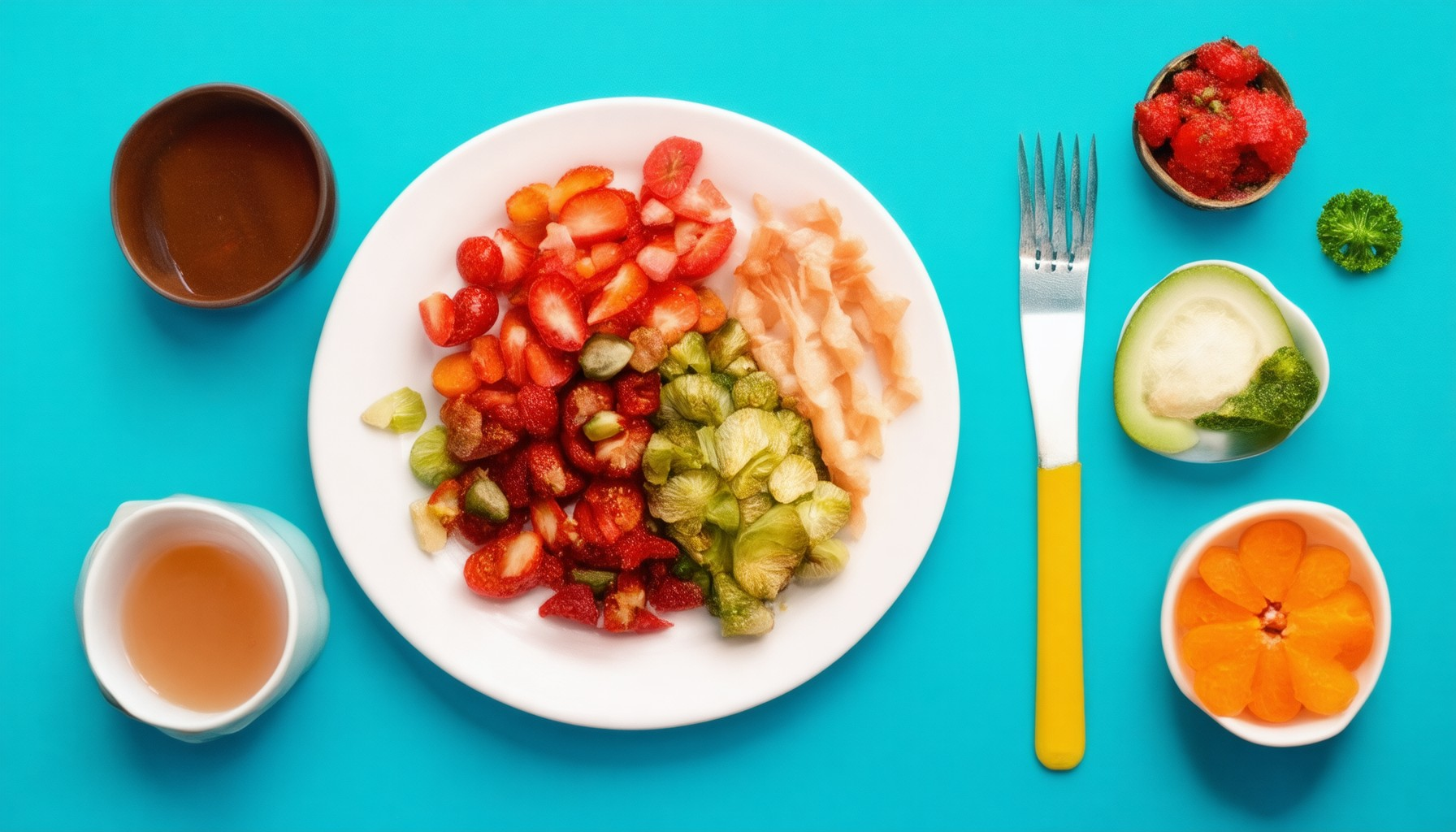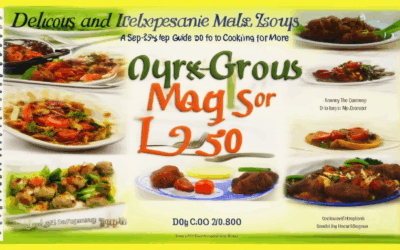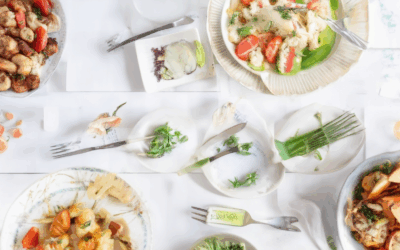Did you ever find yourself staring at a plate of perfectly good food, wondering how to make the most of it? Many of us face this challenge daily, as leftovers often go uneaten despite their potential. In a world where food waste is both a moral and environmental concern, finding creative ways to repurpose leftovers isn’t just smart—it’s essential. Whether you’re aiming to reduce your food waste, save money, or explore new culinary horizons, this guide offers practical strategies to transform those leftover scraps into nutritious, delicious meals. From repurposing ingredients to enhancing flavors, we’ll delve into how to make every bite count, ensuring nothing goes to waste. Join us as we uncover innovative approaches to minimizing food waste and maximizing the value of your kitchen scraps.
Key Takeaways
- Transform leftovers into hearty soups or stews for a nutritious meal.
- Use stale bread to create casseroles, croutons, or breadcrumbs for versatile dishes.
- Freeze leftovers properly to extend their shelf life and reduce waste.
- Blend leftover vegetables into nutrient-rich smoothies for a quick snack or breakfast.
- Incorporate leftover dairy products into sauces, smoothies, or toppings for added flavor.
- Use pancake or waffle batter creatively with extra ingredients for varied meals.
- Roast leftover vegetables again for a caramelized snack or side dish.
- Enhance the flavor of leftovers with herbs, spices, or marinades.
- Create quick and filling egg dishes using leftover vegetables, meats, or grains.
- Start a compost pile to recycle biodegradable leftovers and support eco-friendly gardening.
- Share surplus leftovers with friends, family, or neighbors to reduce food waste.
- Plan meals strategically to minimize leftovers and reduce overbuying.
- Properly store leftovers in airtight containers to maintain quality and prevent waste.
- Utilize frozen herbs, bread, and dairy products for future cooking endeavors.
- Donate leftover foods to shelters or food banks to help those in need.
- Experiment with international dishes like curries or stir-fries using leftover grains or noodles.
- Ferment vegetables into kimchi or pickles for a flavorful addition to meals.
- Don’t discard fruit peels; use them in smoothies, jams, or preserves for a sweet touch.
- Dry out leftover herbs for future use or grinding into spices.
- Create unique dishes like omelets filled with leftover veggies or pizzas topped with leftover meats.

How Can You Make the Most of Your Leftovers?
Leftovers don’t have to be wasted. With a little creativity and planning, you can transform them into delicious meals and reduce food waste. Here are some practical tips to help you make the most of your leftovers:
- Freeze What You Can: Many foods, like meats, dairy products, and vegetables, can be frozen to extend their freshness. Freeze leftover chicken, beef, or fish for future meals. Herbs and spices can also be frozen in ice cube trays for later use.
- Utilize Scraps in Cooking: Don’t throw away vegetable peels or bread crusts. Carrot peels can add extra nutrients to soups or stocks, while stale bread can be dried into breadcrumbs for coating or topping dishes. Fruit peels can sometimes be used in smoothies or jams.
- Repurpose Leftovers Into New Dishes: Transform leftover rice into fried rice or use pasta remnants in a simple pasta bake. Leftover potatoes can be turned into mashed potatoes or roasted again for a crispy texture. Casserole dishes are also a great way to use up various leftovers combined with eggs or cheese.
- Compost Your Food Waste: If you have a compost pile, add your leftover food scraps to it. This not only reduces waste but also creates nutrient-rich soil for your garden. Just make sure your compost area is clean and free from pests.
- Plan Meals to Minimize Waste: Meal prep can help you control portion sizes and reduce leftovers. Store leftovers in airtight containers or wrap them tightly in plastic wrap to keep them fresh. Label them with the name and date to avoid confusion.
- Donate to Those in Need: If you have non-perishable items or excess food, consider donating to local food banks or shelters. This not only helps those in need but also contributes to a more sustainable food system.
- Use Apps to Track and Manage Leftovers: There are apps and tools available that can help you track expiration dates, manage leftovers, and get reminders to eat before food spoils. These can be particularly useful if you’re trying to be more mindful of your food usage.
By adopting these strategies, you can reduce food waste, save money, and enjoy more creative meals. Remember to always store leftovers properly and plan meals ahead to make the most of everything you have.
Transforming Leftovers into Exciting Meals
Leftovers don’t have to be boring! With a bit of creativity and effort, you can turn ordinary ingredients into delicious, new dishes. Here are some innovative ways to repurpose your leftovers:
- Bread and Pasta: Turn stale bread into homemade croutons or breadcrumbs. For a quick snack, try making a bruschetta with your favorite toppings, or use leftover pasta to create a hearty pasta salad with veggies and proteins.
- Vegetables: Don’t let your veggies go to waste. Sauté them with proteins or grains for a quick stir-fry, or blend them into soups or smoothies. Try making a vegetable curry for a flavorful meal.
- Meat and Fish: Repurpose leftover meats in casseroles, tacos, or sandwiches. For seafood, consider making a ceviche or sushi if you have raw ingredients.
- Dairy Products: Use leftover milk in smoothies or as a base for soups. Turn cheese into gratins or omelets, and incorporate yogurt into dips or parfaits.
- Fruits: Bake overripe bananas into banana bread or use fruits in pies and cobblers. Create a refreshing fruit salad with a variety of berries and citrus juices.
- General Tips: Plan meals to minimize waste, store leftovers properly, and consider freezing foods like soups and stews for future use. Experiment with international cuisines to explore new ways to enjoy your ingredients.
By getting creative and staying organized, you can reduce food waste and enjoy exciting, nutritious meals without spending extra money.

Effective Tips for Using Leftovers to Reduce Food Waste
We all want to make the most of our ingredients and minimize waste. Here are some practical tips to help you use leftovers creatively:
- Plan meals thoughtfully: Create a weekly meal plan based on what you have. This helps reduce impulse purchases and ensures nothing goes to waste.
- Store leftovers properly: Use airtight containers or wrap foods tightly to keep them fresh. Label them so you know what’s what for future use.
- Repurpose scraps: Don’t throw away vegetable peels or bread crusts. They can be used for stocks, soups, or homemade breadcrumbs.
- Freeze excess: Freeze leftover portions of meats, vegetables, and dairy to use later. This is especially useful for bulk items like leftovers from large family gatherings.
- Donate when possible: If you can’t use leftovers, consider donating to local food banks or shelters. Many organizations accept perishable items.
- Shop strategically: Buy only what you need and avoid overstocking. This reduces waste and helps you use what you have more efficiently.
By adopting these habits, you can not only reduce food waste but also become more resourceful in the kitchen. Remember, every leftover has potential to become a delicious meal!

What Are the Best Ways to Use Leftovers to Minimize Food Waste?
Minimizing food waste is a smart way to save money and contribute to a more sustainable lifestyle. Here are 15 practical and creative ways to use leftovers effectively:
- Make Soups or Stews: Combine leftover meats, vegetables, and broth into a hearty soup or stew. This is a simple way to transform odds and ends into a delicious meal.
- Create Casseroles: Use leftover bread, pasta, and cooked meats to make a comforting casserole. Add cheese, sauce, and spices for added flavor.
- Stir-Fry Vegetables: Slice leftover vegetables (like carrots, bell peppers, or broccoli) and stir-fry them with tofu, rice, or noodles for a quick and healthy meal.
- Freeze Leftovers: Properly store leftovers in the freezer for later use. Label containers with dates to keep track of what’s available.
- Repurpose Bread: Turn stale bread into croutons, breadcrumbs, or homemade English muffins for baking or cooking.
- Use Dairy Products Creatively: Incorporate leftover milk, yogurt, or cheese into smoothies, sauces, or as a topping for dishes like pasta or grains.
- Turn Vegetables Into Smoothies: Blend leftover fruits, vegetables, or greens into nutrient-rich smoothies for a quick breakfast or snack.
- Make Pancakes or Waffles: Use leftover pancake mix or waffle batter by adding ingredients like banana, chocolate chips, or peanut butter for variety.
- Roast Vegetables Again: Roast leftover vegetables again at a lower temperature until caramelized for a sweet and savory snack or side dish.
- Use Herbs and Spices Strategically: Enhance the flavor of leftovers by incorporating herbs, spices, or marinades from other dishes.
- Make Egg Dishes: Scramble eggs with leftover vegetables, meats, or grains for a quick and filling breakfast or dinner option.
- Start a Compost Pile: If possible, compost biodegradable leftovers to create nutrient-rich soil for gardening.
- Share Excess with Others: If you have large amounts of leftovers, consider sharing them with friends, family, or neighbors to reduce waste.
- Plan Meals Weekly: Reduce leftovers by planning meals in advance and utilizing ingredients seasonally or based on availability.
By getting creative with your leftovers, you can significantly reduce food waste while enjoying delicious and varied meals. Remember to store leftovers properly and plan meals to minimize excesses.
Creative Ways to Repurpose Leftovers
Transform your leftovers into delicious meals and minimize food waste with these innovative ideas:
- Make a Sandwich or Wrap: Use stale bread, leftover meats, cheeses, or vegetables to create a hearty sandwich or wrap. This is a great way to use up odds and ends from the fridge.
- Turn Scraps into Stocks or Broths: Save vegetable peels, onion skins, and herb stems to make homemade stocks or broths. These are perfect for soups, sauces, and risottos.
- Create a Casserole or Pasta Dish: Combine leftover meats, cheeses, and vegetables into a casserole or pasta bake. This is a versatile way to use up various ingredients.
- Repurpose Fruit Scraps: Don’t throw away banana peels or apple cores. Use them in smoothies, jams, or pickles for a sweet and tangy twist.
- Make Kimchi or Pickles: Ferment leftover vegetables like carrots, cucumbers, or bell peppers into kimchi or pickles. This is a great way to preserve food and add flavor to dishes.
- Use Herbs and Spices: Dry out leftover herbs (like rosemary or thyme) in a dehydrator or microwave and store them for future use. You can also grind them into spices for later use.
- Turn Bread into Croutons or Breadcrumbs: Slice leftover bread and bake it into croutons or breadcrumbs. These are excellent for topping salads or soups.
- Make a Stir-Fry or Hash: Chop up leftover vegetables, meats, or fish and sauté them in a pan with oil and soy sauce. Serve as a tasty stir-fry or hash.
- Utilize Dairy Products: Use leftover milk to make yogurt or cheese. For eggs, create omelets or scrambles with any remaining ingredients.
- Cook Rice or Grains: Repurpose leftover rice, quinoa, or oats into fried rice, pilaf, or porridge. These dishes are flavorful and easy to prepare.
- Make a Dessert: Transform leftover bread into French toast or use fruits to create smoothies or parfaits. Even chocolate ganache can be made with leftover chocolate.
By getting creative with your leftovers, you can reduce food waste and enjoy new and exciting meals. Remember to store leftovers properly and check for expiration dates before repurposing!

Effective Ways to Make the Most of Your Leftovers
Leftovers don’t have to be wasted—they can be transformed into delicious meals and snacks. Here are some creative ways to repurpose your leftovers:
- Store Properly:** Keep leftovers in airtight containers to prevent them from drying out or developing odors. Label them with the name and date for easy reference.
- Plan Meals Strategically:** Use leftovers as a base for new dishes. For example, transform leftover chicken into a stir-fry or pasta dish.
- Freeze Ingredients:** Freeze fresh herbs, bread, and dairy products to extend their shelf life and use them later in soups, sauces, or baked goods.
- Repurpose Scraps:** Don’t throw away vegetable peels or eggshells. They can be used for stocks, soups, or composting.
- Make Lunchbox Friends:** Pack leftovers into lunchboxes for family members or friends, ensuring nothing goes to waste.
- Host a Leftover Swap:** Organize a swap with neighbors or friends to share excess items and reduce waste.
- Try Food Hacks:** Create unique dishes like omelets filled with leftover veggies or pizzas topped with leftover meats and cheeses.
- Donate to Those in Need:** Share surplus foods with local shelters or food banks to help others in need.
- Compostables:** Add biodegradable leftovers like fruit peels and coffee grounds to your compost pile.
- Experiment with Flavors:** Turn leftovers into international dishes, such as using rice as a base for curries or noodles for stir-fries.
By getting creative with your leftovers, you can minimize waste and maximize the value of your ingredients. Remember to always store and use leftovers safely to ensure they’re safe for consumption.
For more tips and inspiration, explore our recipe database and culinary guides at Memories Restaurant .





0 Comments